
|
Astronomy Picture Of the Day (APOD)
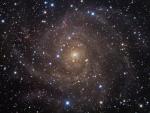 Hidden Galaxy IC 342
Hidden Galaxy IC 342
5.10.2006
Similar in size to other large, bright spiral galaxies IC 342 is a mere 7 million light-years distant in the long-necked, northern constellation Camelopardalis. A sprawling island universe, IC 342 would otherwise...
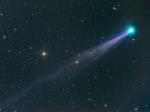 Comet SWAN Brightens
Comet SWAN Brightens
4.10.2006
A newly discovered comet has brightened enough to be visible this week with binoculars. The picturesque comet is already becoming a favored target for northern sky imagers. Pictured above just last week, Comet SWAN showed a bright blue-green coma and an impressive tail.
 Light from the Heart Nebula
Light from the Heart Nebula
3.10.2006
What powers the Heart Nebula? The large emission nebula dubbed IC 1805 looks, in whole, like a human heart. The nebula glows brightly in red light emitted by its most prominent element: hydrogen. The red glow and the larger shape are all created by a small group of stars near the nebula's center.
2.10.2006
Scroll right to see the largest crater yet visited by a rover on Mars. Reaching the expansive Victoria Crater has been a goal for the robotic Opportunity rover rolling across Mars for the past 21 months. Opportunity reached Victoria last week, and is cautiously probing the stadium-sized crevice.
 APOD: 2006 October 1- Earth at Night
APOD: 2006 October 1- Earth at Night
1.10.2006
This is what the Earth looks like at night. Can you find your favorite country or city? Surprisingly, city lights make this task quite possible. Human-made lights highlight particularly developed or populated areas of the Earth's surface, including the seaboards of Europe, the eastern United States, and Japan.
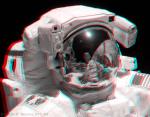 STS 115: Stereo Portrait
STS 115: Stereo Portrait
30.09.2006
On September 12, astronaut Heidemarie Stefanyshyn-Piper snapped photos of her colleague Joseph Tanner during the STS-115 mission. At the time, the spacesuited pair were working outside the shuttle orbiter Atlantis, some 300 kilometers above planet Earth.
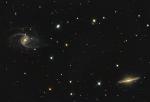 APOD: 2006 September 29- NGC 5905 and 5908
APOD: 2006 September 29- NGC 5905 and 5908
29.09.2006
These two beautiful galaxies, NGC 5905 (left) and NGC 5908 lie about 140 million light-years distant in the northern constellation Draco. Separated by about 500,000 light-years, the pair are actually both spiral galaxies and nicely illustrate the striking contrasts in appearance possible when viewing spirals from different perspectives.
 APOD: 2006 September 28- RCW 86: Historical Supernova Remnant
APOD: 2006 September 28- RCW 86: Historical Supernova Remnant
28.09.2006
In 185 AD, Chinese astronomers recorded the appearance of a new star in the Nanmen asterism - a part of the sky identified with Alpha and Beta Centauri on modern star charts. The new star was visible for months and is thought to be the earliest recorded supernova.
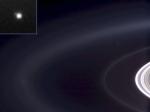 APOD: 2006 September 27- Earth from Saturn
APOD: 2006 September 27- Earth from Saturn
27.09.2006
What's that pale blue dot in this image taken from Saturn? Earth. The robotic Cassini spacecraft looked back toward its old home world earlier this month as it orbited Saturn. Using Saturn itself to block the bright Sun, Cassini imaged a faint dot on the right of the above photograph.
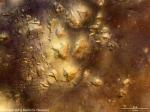 APOD: 2006 September 26- Mars Express: Return to Cydonia
APOD: 2006 September 26- Mars Express: Return to Cydonia
26.09.2006
The unusual stone mesas of the Cydonia region on Mars are quite striking in appearance. Last week, the Mars Express project released a new close-up image of a portion of the Cydonia region on Mars. This new image, taken by the robotic Mars Express spacecraft now orbiting Mars, shows an area about 90 kilometers wide.
|
January February March April May June July August September October November December |
|||||||||||||||||||||||||||||||||||||||||||||||||